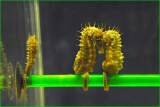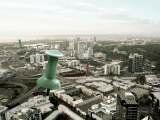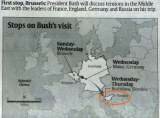|
|
||
Source: www.space4case.com
For National Geographic Channel He made two images of the exploration sites of the 2 Mars rovers: The Homeplate surroundings (near Husband Hill) in the Gusev Crater (Spirit Rover) and the Meridiani surface (Opportunity Rover)
They visualize the circumstances of these spots in the past: about a few billion years ago: The Homeplate where volcanic activities (hot springs/fumerols) like water and minerals might have formed the Homeplate; and for the Opportunity the dunes that were submerged with water during a period of time.
Gusev Crater Homeplate Noachian period

Mars Noachian period

Mars Today

Northpole and Vastitas Borealis

Schiaparelli Crater

Lyot Crater (Vastitas Boleares)

Gusev Crater ancient view

Ius and Melas Chasma Valles Marineris

Noctis Labyrinthus

Olympus Mons and Olympus Rupes

Elysium Mons sunrise

They visualize the circumstances of these spots in the past: about a few billion years ago: The Homeplate where volcanic activities (hot springs/fumerols) like water and minerals might have formed the Homeplate; and for the Opportunity the dunes that were submerged with water during a period of time.
Gusev Crater Homeplate Noachian period

Mars Noachian period
Mars about 4 billion years ago. The Vastitas Bolearis filled with water, the large lake at the bottom right is the Meridiani. The Opportunity Rover found evidence of such an inner sea. Made for National Geo. July 2005 issue.

Anuncios Google
Mars Today

Northpole and Vastitas Borealis
At left one of the larger craters that have a name: the Korolev Crater (about 85 km (53 mi) in diameter ).

Schiaparelli Crater
With a low sun the light even doesn’t reach the western ridge. The Schiaparelli Crater is 450 kilometers (280 miles) in diameter.

Lyot Crater (Vastitas Boleares)
Some haze in the crater lightens up. At the horizon the Deuteronilus Mensae. The Lyot Crater is 236 km (~147 mi.) in diameter.

Gusev Crater ancient view
Landing site of the Spirit MER2003 rover. A ancient view after a duststorm.

Ius and Melas Chasma Valles Marineris
View west to east from the Ius Chasma southern edge to the Melas Chasma.

Noctis Labyrinthus
It is the largest labyrinth in the solar system of intersecting canyons.

Olympus Mons and Olympus Rupes
The Olympus Mons and the walls of the Olympus Rupes.

Elysium Mons sunrise
An image made for the Madrid Planetarium exhibition about Mars. At left the Hecates Tholus and at the right the Albor Thorus.










